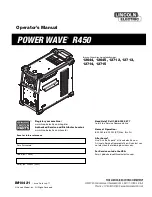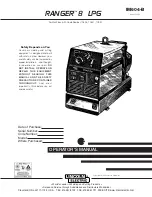
59
A
B
1
2
3
4
5
6
7
8
9
10
11
12
13
J7
I-DET
E-DET
KEY
EMERG2
P1
P2
-FAILSAFE
OUT1
+24V
+24V
GND
GND
1
2
3
4
5
6
7
8
9
10
11
12
13
J7
I-DET
E-DET
KEY
EMERG1
EMERG2
P1
P2
-FAILSAFE
OUT1
+24V
+24V
GND
GND
R
P1
P2
C1
C2
R = 220 Ohm 1/4W
C1=C2= 220
μ
F 35V
Imp. Min. 150ms
A
B
1
2
3
4
5
6
7
8
9
10
11
12
13
J7
I-DET
E-DET
KEY
EMERG1
EMERG2
P1
P2
-FAILSAFE
OUT1
+24V
+24V
GND
GND
1
2
3
4
5
6
7
8
9
10
11
12
13
J7
I-DET
E-DET
KEY
EMERG1
EMERG2
P1
P2
OUT1
+24V
+24V
GND
GND
A
B
A
B
ENGLISH
Interlock with internal sensors
This application is recommended when the distance between
the two doors is sufficient to avoid interference in the detection
ranges of the two internal sensors.
• Make the connections between the J6 terminal boards of the
two control boards and the sensors as shown in figure 66.
• Program the following functions::
– “interlock” active on both doors,
– select the “master” option for the internal door, and the
“slave” option for the external one,
– select, for both doors, option “interlock with no memory”
or “interlock with memory” (refer to explanations in the
programming flow-charts).
Important:
• The sensors must be connected ONLY to the E-DET input of
the equipment;
• The interlock will operate only if both doors are set to the ONE
WAY operating function.
Operation
These are the interlock operational stages:
1. The person on the outside activates sensor S1 of door A;
2. Door A opens;
3. The person enters the internal space between the two
doors;
4. Door A closes after the pause time elapses;
5. The person activates sensor S3 of door B (If the “Interlock with
memory” option was selected, there is no need to wait for
the first door to close totally in order to activate the sensor
of the second door);
6. Door B opens;
7. The person exits;
8. Door B closes after the pause time elapses.
The operation is identical if the person comes from the opposite direction.
Interlock with push-buttons
This application is recommended if the doors are so near to one
another that the two internal sensors cannot be used; two push-buttons
are provided for activating the doors from the outside.
• Make the connections between the J6 terminal boards of
the two control boards, of the push-buttons and additional
electronic components as shown in figure 67.
• Program the following functions:
– “interlock” active on both doors,,
– select the “master” option for the internal door, and the
“slave” option for the external one,
– select the “interlock with memory” option for both doors
(refer to explanations in the programming flow-charts).
Important:
• The push-buttons must be connected ONLY to the E-DET input
of the equipment;
• The interlock will operate only if both doors are set to the ONE
WAY operating function.
Operation
These are the interlock operational stages:
1. The person on the outside activates push-button P1 of door A;
2. Door A opens;
3. The person enters the internal space between the two
doors;
4. Door A closes after the pause time elapses;
5. Door B opens automatically;
6. The person exits;
7. Door B closes after the pause time elapses.
The operation is identical if the person comes from the opposite
direction.
INTERLOCK
fig. 66
fig. 67
WARNING:
For the interlock configuration with sensors or keys adhere to the EN16005 standard using monitored
sensors or using the LOW ENERGY mode.
Summary of Contents for A140 AIR Series
Page 1: ...A140 AIR H100 H140 EN16005...
Page 2: ......
Page 7: ...5 A140 AIR H100 H140 ENGLISH fig 4...
Page 8: ...6 ENGLISH fig 5 A140 AIR H100 H140 glass leaf...
Page 9: ...7 ENGLISH A140 AIR H140 with door carriage spacer fig 6...
Page 69: ......










































